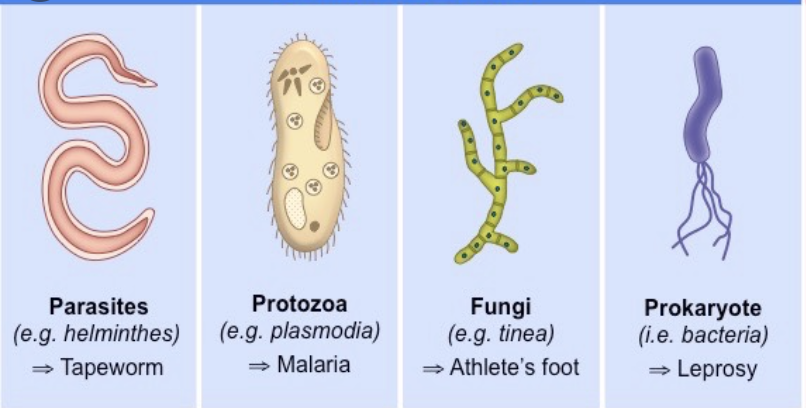Pathogenicity and Virulence
Pathogenicity and virulence are both equally significant concepts in microbiology. Simply put, pathogenicity refers to an organism’s ability to cause disease and harm its host. Virulence refers to the severity or degree of the pathology caused by an organism. Although pathogenicity and virulence are used interchangeably, experts have made an effort to distinguish between the two. Pathogenicity is used as a qualitative term, whereas virulence is used more as a quantitative term.
Pathogens are the overall group of disease-causing organisms. This category includes algae, bacteria, fungi, viruses, certain parasites, and more. These all cause disease in some way or another, and some are more dangerous than others. Various sub-concepts have been studied for the pathogens, such as bacteriology, virology, parasitology, and more of the like. Pathogens can be described from a multitude of aspects, such as its ability to produce toxins, enter tissue, colonize, and hijack nutrients. Antigens are proteins that are found on the surfaces of pathogens. Different pathogens have varying types of antigens on their surfaces. Our immune systems defend against antigens by producing antibodies!
Virulence is the term used to describe how critically a pathogen has affected its host. Pathogens have been observed to evolve at an optimal virulence, meaning that over time, pathogens do more and more damage to a host. Virulence also involves two types of disease transmission: horizontal transmission and vertical transmission. Horizontal transmission occurs when a disease is spread from one host to another host of the same species, so from human to human, for example. Vertical transmission is spread genetically through generations of an individual family. For example, a mother with a disease can spread the disease to her offspring.
Types of Pathogens
Picture Source: BioNinja.com

